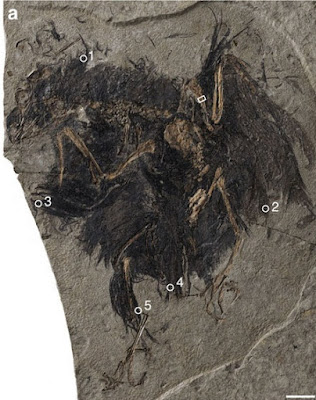 |
| Brycon hilarii (Valenciennes, 1850) |
Abstract
A revision of the cis-andean species of Brycon, with the exception of the Brycon pesu species-complex, is presented. Twenty-one Brycon species (including B. pesu) are recognized from cis-andean river systems: Brycon stolzmanni Steindachner, from the upper Río Marañon basin, Peru; Brycon coxeyiFowler, from the Río Marañon basin, Ecuador and Peru; Brycon polylepisMoscó Morales, from the Lago de Maracaibo, Río Orinoco, upper rio Amazonas, and rio Tocantins basins, Venezuela, Colombia, Peru, and Brazil; Brycon coquenani Steindachner, from the upper Río Caroni, Río Orinoco basin, Venezuela; Brycon insignis Steindachner, from the rio Paraíba do Sul and small adjacent coastal river basins of eastern Brazil; Brycon vermelha Lima & Castro, endemic from the rio Mucuri basin, eastern Brazil; Brycon howesi new species, endemic from the rio Jequitinhonha basin, Brazil; Brycon dulcis new species, endemic from the rio Doce basin, eastern Brazil; Brycon ferox Steindachner, from several small coastal river systems, including the rio Mucuri basin in eastern Brazil; Brycon vonoi new species, from the rio Pardo basin and apparently also from a adjacent river system, the rio Una, in eastern Brazil; Brycon opalinus(Cuvier), from the headwaters of the rio Paraíba do Sul and rio Doce basins, eastern Brazil; Brycon nattereriGünther, from the headwaters of the upper rio Paraná, rio São Francisco, and upper rio Tocantins basins, Brazil; Brycon orthotaenia Günther, endemic from the rio São Francisco basin, Brazil; Brycon orbignyanus(Valenciennes), from the rio Paraná and rio Uruguai basins, Brazil, Paraguay, Argentina, and Uruguay; Brycon hilarii (Valenciennes), from the rio Paraguai, middle rio Paraná, and upper rio Amazonas basins, Brazil, Paraguay, Argentina, Peru, and Ecuador; Brycon whitei Myers & Weitzman, from the Río Orinoco basin in Colombia and Venezuela; Brycon amazonicus (Agassiz), from the Rio Amazonas and Río Orinoco basins, Brazil, Peru, Colombia, Bolivia, Venezuela, and Guyana; Brycon gouldingi Lima, endemic from the rio Tocantins basin, Brazil; Brycon melanopterus(Cope), from the western and central rio Amazonas basin, Brazil, Peru, Ecuador, and Colombia; and Brycon falcatusMüller & Troschel, widespread in the the rio Amazonas and Río Orinoco basins, and several guyanese river systems, in Brazil, Venezuela, Colombia, Peru, Bolivia, Guyana, Suriname, and French Guiana. All species are redescribed and illustrated, and a key to the species is provided. Comments on the diagnosis of the genus Brycon, the biogeography of the cis-andean species, and their current conservation status, are presented.
Keywords: Pisces, taxonomy, conservation, biogeography, mimicry, Amazon basin, Orinoco basin, eastern Brazil
Flávio C. T. Lima. 2017. A Revision of the Cis-Andean Species of the Genus Brycon Müller & Troschel (Characiformes: Characidae).
Zootaxa. 4222(1); 1-189. DOI: 10.11646/zootaxa.4222.1.1
Zootaxa. 4222(1); 1-189. DOI: 10.11646/zootaxa.4222.1.1
21 Brycon species (including B. pesu) are recognized from Cis-Andean River Systems:
• Brycon stolzmanni Steindachner, from the upper Río Marañon basin, Peru
• Brycon coxeyi Fowler, from the Río Marañon basin, Ecuador and Peru
• Brycon polylepis Moscó Morales, from the Lago de Maracaibo, Río Orinoco, upper rio Amazonas, and rio Tocantins basins, Venezuela, Colombia, Peru, and Brazil
• Brycon coquenani Steindachner, from the upper Río Caroni, Río Orinoco basin, Venezuela
• Brycon insignis Steindachner, from the rio Paraíba do Sul and small adjacent coastal river basins of eastern Brazil
• Brycon vermelha Lima & Castro, endemic from the rio Mucuri basin, eastern Brazil
• Brycon howesi new species, endemic from the rio Jequitinhonha basin, Brazil
• Brycon dulcis new species, endemic from the rio Doce basin, eastern Brazil
• Brycon ferox Steindachner, from several small coastal river systems, including the rio Mucuri basin in eastern Brazil
• Brycon vonoi new species, from the rio Pardo basin and apparently also from a adjacent river system, the rio Una, in eastern Brazil
• Brycon opalinus (Cuvier), from the headwaters of the rio Paraíba do Sul and rio Doce basins, eastern Brazil
• Brycon nattereri Günther, from the headwaters of the upper rio Paraná, rio São Francisco, and upper rio Tocantins basins, Brazil
• Brycon orthotaenia Günther, endemic from the rio São Francisco basin, Brazil
• Brycon orbignyanus (Valenciennes), from the rio Paraná and rio Uruguai basins, Brazil, Paraguay, Argentina, and Uruguay
• Brycon hilarii (Valenciennes), from the rio Paraguai, middle rio Paraná, and upper rio Amazonas basins, Brazil, Paraguay, Argentina, Peru, and Ecuador
• Brycon whitei Myers & Weitzman, from the Río Orinoco basin in Colombia and Venezuela
• Brycon amazonicus (Agassiz), from the Rio Amazonas and Río Orinoco basins, Brazil, Peru, Colombia, Bolivia, Venezuela, and Guyana
• Brycon gouldingi Lima, endemic from the rio Tocantins basin, Brazil
• Brycon melanopterus (Cope), from the western and central rio Amazonas basin, Brazil, Peru, Ecuador, and Colombia
• Brycon falcatus Müller & Troschel, widespread in the the rio Amazonas and Río Orinoco basins, and several guyanese river systems, in Brazil, Venezuela, Colombia, Peru, Bolivia, Guyana, Suriname, and French Guiana










































































